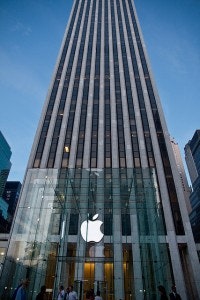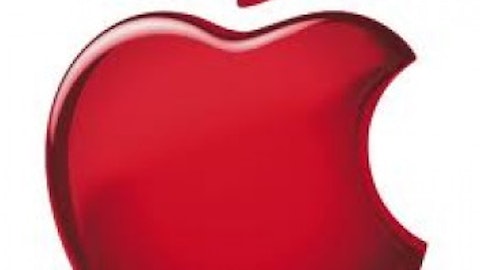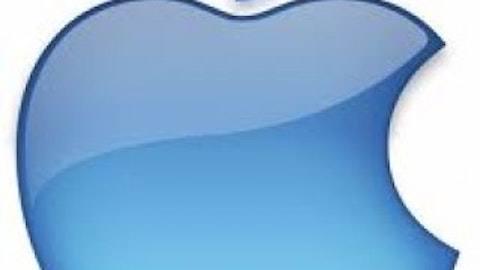Yesterday, Apple Inc. (NASDAQ:AAPL) set records with its $17 billion offering of bonds, making it the largest corporate bond offering ever. Yet despite the unique attributes of the offering, Apple’s big bond sale has several lessons that bond investors throughout the market should pay close attention to in deciding how to allocate their capital. Let’s take a look at three of them.
Lesson 1: Companies are getting great rates.

Apple Inc. (NASDAQ:AAPL) isn’t the only company scoring attractive rates on bonds. Rival Microsoft Corporation (NASDAQ:MSFT) managed to get even better interest rates on its five-, 10-, and 30-year bond sales last week, owing in part to its superior bond rating of AAA compared to Apple Inc. (NASDAQ:AAPL)’s AA+. Moreover, other companies, such as Colgate-Palmolive Company (NYSE:CL) and NIKE, Inc. (NYSE:NKE), were able to get slightly better terms with more modest offerings.
The low rates come from ridiculously strong demand. For instance, as Fool contributor Alex Dumortier reported yesterday, demand for Apple’s bond offering reached $50 billion, indicating that the issues were oversubscribed by a factor of 3-to-1. As long as bond investors want to buy debt that in most cases pays less than the rate of inflation, companies won’t hesitate to offer it to them.
Lesson 2: Companies are lending long.
The structure of Apple’s six-tier bond offering shows the emphasis that companies have placed on locking in long-term financing. Fully half the overall offering came in the form of 10- and 30-year debt, with three-year fixed notes representing less than 10% of the offering despite much lower financing costs for that debt.
Put simply, such a structure makes it clear that Apple Inc. (NASDAQ:AAPL) and the many corporations that are following the same strategy believe that rates are heading higher, and it makes sense to pay slightly more in order to avoid having to refinance three to five years down the line at what could potentially be much higher rates. Despite the floating-rate component of the Apple offering — likely done to appease certain institutional buyers rather than as a capital-allocation decision on Apple’s part — the tendency toward longer-duration debt shows a recognition from companies that the good times in the bond market won’t last forever.
Lesson 3: Dividend yields continue to pull investors into stocks.
With the offering, Apple joined the ranks of Johnson & Johnson (NYSE:JNJ), The Coca-Cola Company (NYSE:KO), Microsoft Corporation (NASDAQ:MSFT), and many other major companies that have dividend yields well in excess of the rates on their 10-year debt. Given the choice to take a smaller yield for a security with no growth potential whatsoever versus a higher yield for the riskier but potentially more lucrative stock, income investors have been willing to take on extra risk.
Companies recognize that fact, using it as a direct justification for doing bond offerings in the first place. The entire purpose of Apple Inc. (NASDAQ:AAPL)’s borrowing is to help finance its share buybacks and dividend increase. In Apple’s case, the increase in risk even from $17 billion in debt is relatively small, but stock investors more generally need to consider debt in deciding whether a high dividend yield is worth the potential for more substantial losses from owning stock.
Keep your eyes open
Bond investors have enjoyed huge capital gains from falling rates for decades. But with Apple and other companies dumping tens of billions of dollars of debt onto a willing bond-buying community, you should think twice before you add to your own bond holdings at current rate levels.
The article 3 Key Lessons Apple Has for Bond Investors originally appeared on Fool.com is written by Dan Caplinger.
Fool contributor Dan Caplinger owns shares of Apple. You can follow him on Twitter @DanCaplinger. The Motley Fool recommends Apple, Coca-Cola, Johnson & Johnson, and Nike. The Motley Fool owns shares of Apple, Johnson & Johnson, Microsoft, and Nike.
Copyright © 1995 – 2013 The Motley Fool, LLC. All rights reserved. The Motley Fool has a disclosure policy.


